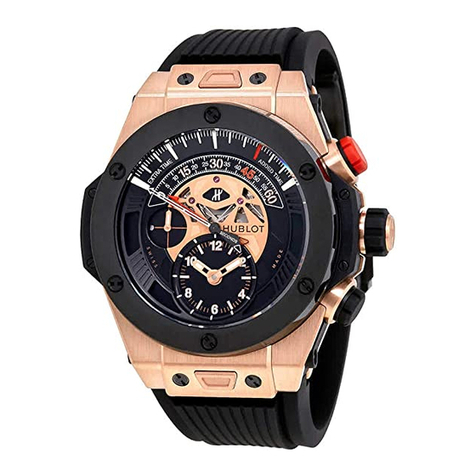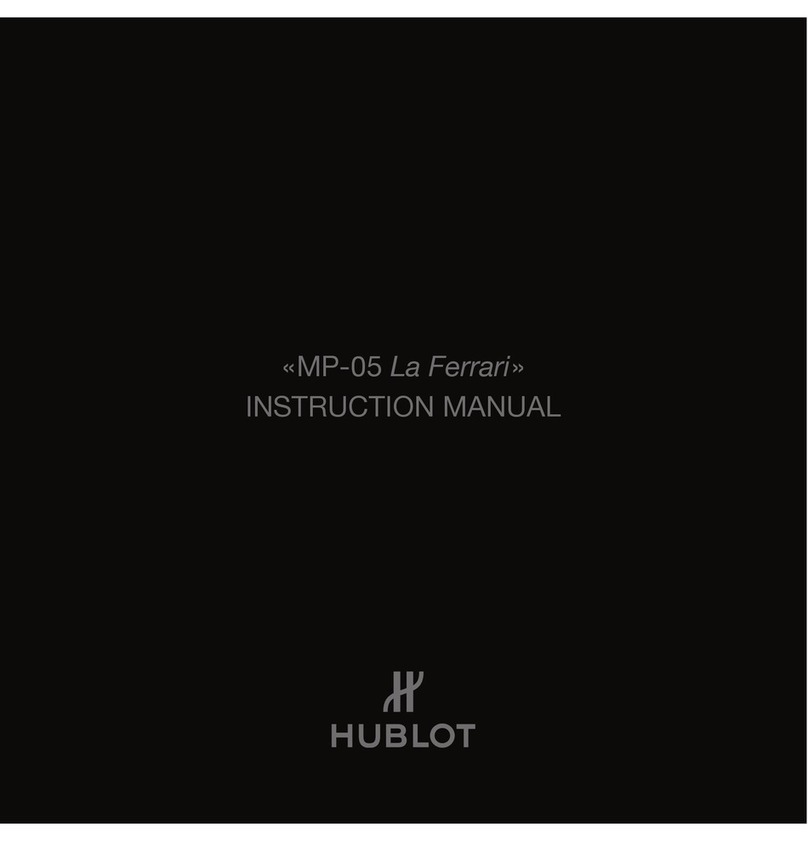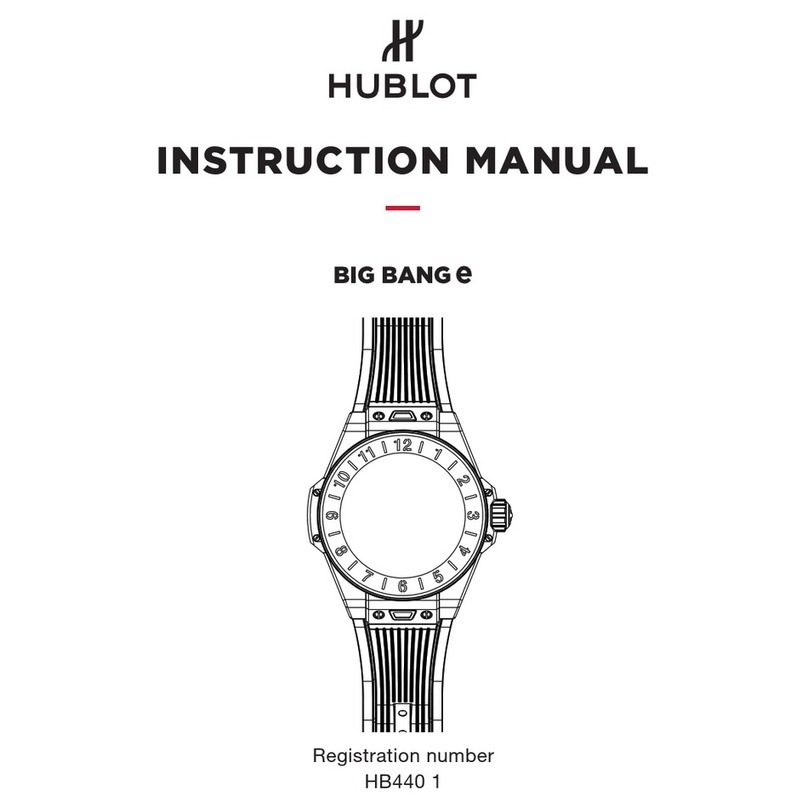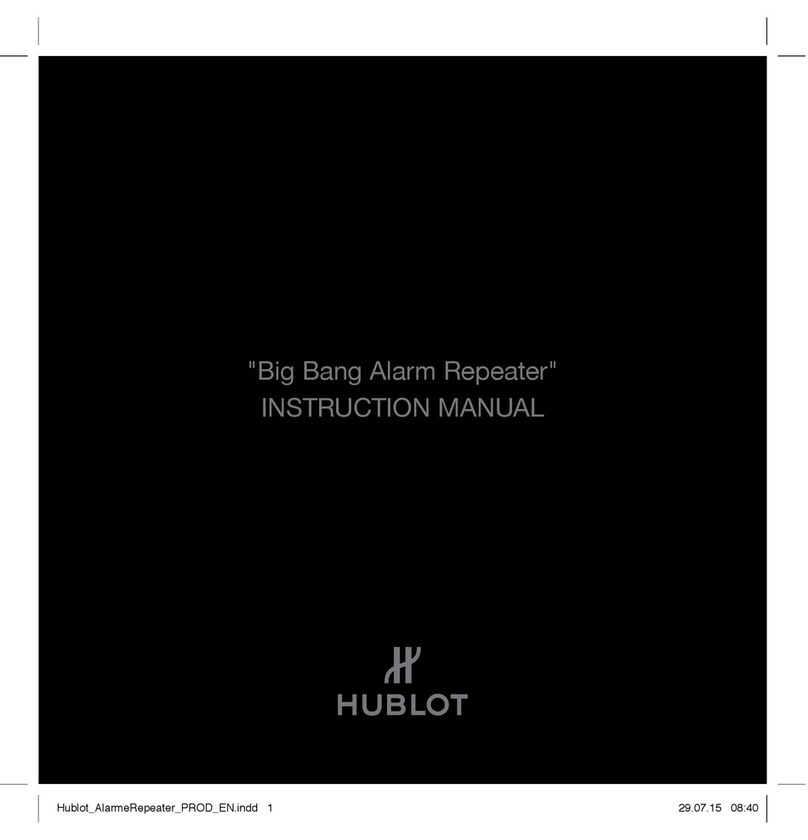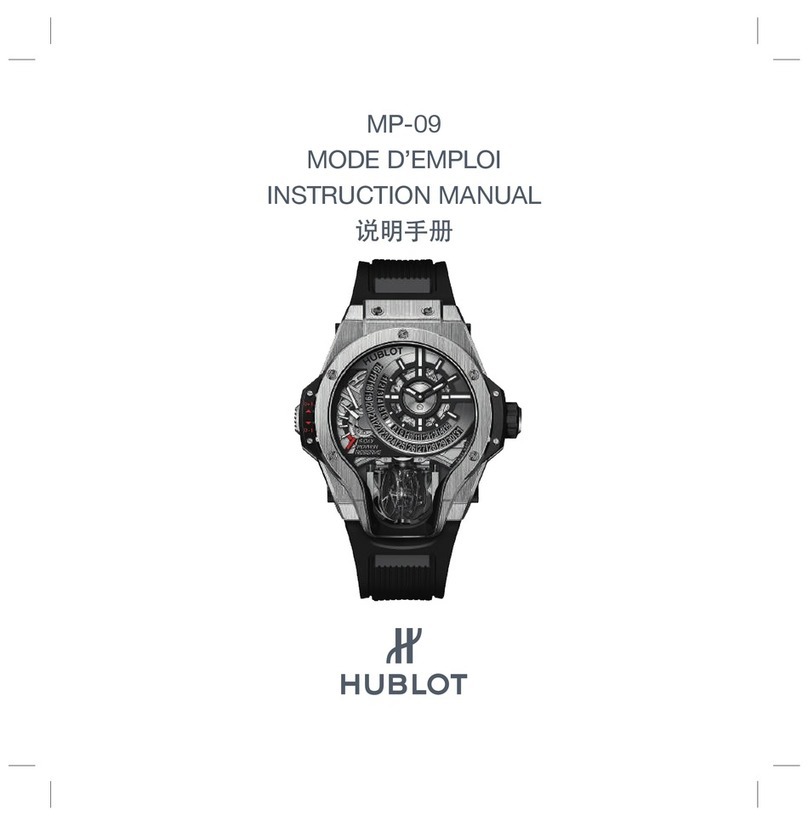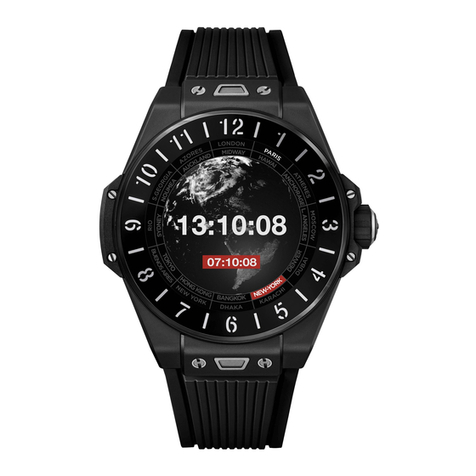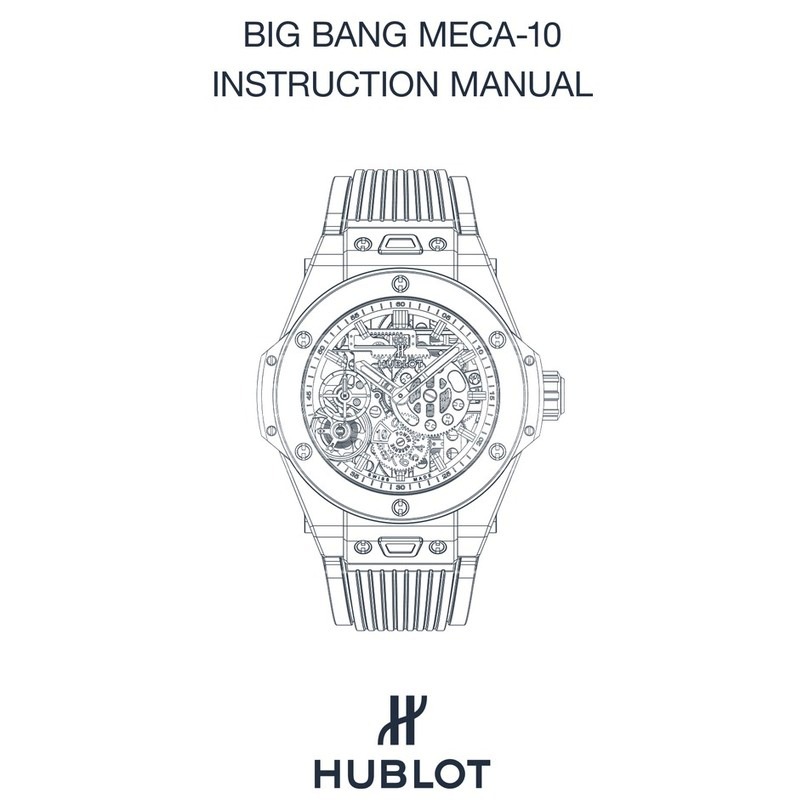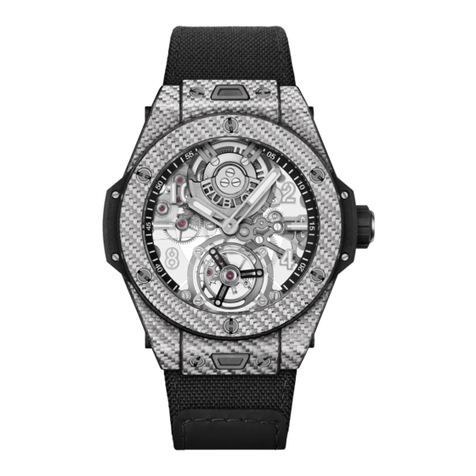The sidereal position is determined by the constellation located directly behind the Moon as observed
by the wearer on a specific date.
The constellations are not reduced to a simple zodiacal name, as is often the case on watches indicating
the astrological sign of the zodiac. In this case, the indication is of an astronomical zodiac sign.
This is an important distinction, as in the first concentric circle the sectors indicating the sign of the
zodiac are not of equal size. The time required for the Moon and Sun to pass through these constella-
tions varies, since they have different shapes in the sky. For example, Virgo is represented in the zodiac
by a woman lying on her side, while Cancer takes the form of a small, very square crab. To summarise,
this indication shows the sector of the sky in which the Moon and Sun can be found on a specific date.
b. A hand, positioned coaxially in relation to the first indication on the Lunar calendar, features a Sun
symbol at its end, and shows two indications :
· On the second concentric circle on the outside of the dial, the end of the hand shows the day of the
month in the solar year, in other words, the date.
· The second indication shown by this hand is the sidereal position of the Sun as viewed from the
Earth (by the wearer)
4. THESE TWO LUNISOLAR INDICATIONS ARE NOT INDEPENDENT.
The wearer moves the calendar hands using the crown located at 9 o’clock, choosing the day of the
year to be indicated by the end of the Sun hand. The movement automatically calculates the other lunar
indications.
5. WHAT IS THE PURPOSE OF THIS WATCH
As well as being able to read the time (hours and minutes), the wearer of this watch can ascertain, for
a given day of the solar year, the name of the constellation behind the Sun and the time required for the
Sun to pass through a constellation. For the same day, the wearer can find out the phase of the Moon,
or more specifically the illuminated proportion of its surface, the name of the constellation behind the
Moon and the time required for the Moon to pass through a constellation.
6. THE MECHANISM GIVES EXTREMELY PRECISE INDICATIONS
a. The Moon phase, or synodic month,
in other words the period between two
full moons, is 29.530589 days.
b. The position of the Moon in the
zodiac in relation to the Earth (sidereal
month) is one rotation every 27.321661
days. In addition, the mechanism takes
into account the irregular nature of the
Moon’s movement, which is caused by
its elliptical trajectory.
c. The Sun indicator hand completes
one rotation every sidereal year, equiva-
lent to 365.256363051 days.
Sun hand
Minute
hand
Hour
hand
Solar
calendar
(or date)
Moon
hand
Moon
phases
Sidereal
zodiac
indications
